Acknowledgements
The research for, and development of, this book was undertaken with the support of a grant awarded by the Research and Graduate Studies Committee of the Petroleum Institute, Abu Dhabi, United Arab Emirates, 2007.
I would like to thank in particular my colleagues at the Petroleum Institute: Robert Craig, Roger Nunn and Matthew J.Webb for their support and contributions.
Many students volunteered to pilot the material. I would like to thank the following in particular for their participation and feedback: Ibrahim Ali Al Kodssi; Karam Abdollmnem Khatib; Marwan Mohsin Al Haj Atalla Hasan Abu Aasi; Mohamed Saeed Mohamed S. M. Al Khanbooli Al Shehhi; Moutaz Bassam Falih Saleh; Saif Ali Mohamed Saeed Al Mesaabi; Saoud Ali Abdulla Fadhel Al Maamari; Tariq Ibrahim Abdul Rahim Al Jallad; Fatima Al Zaabi; Sara Ali Al Abadi; Khawla Abdulla Al Manthari; Yasmine Guefrachi; Tuka Al Hanai; Reem Mohammed Nasser; Basma Ali Abdulkareem Ahmed; Meera Al Marzouqi, Mariam Tareq Ahmed Khalil and Emina Taher Helja.
The following articles have been reprinted and in some cases abridged with permission:
Gillett, A. (1996, updated 2007, personal communication). What is EAP?
Reprinted with permission of the author.
Beder, S. (1997). Addressing the issues of social and academic integration for first-year students: a discussion paper.
Reprinted with permission of the author.
Coxhead, A. (2005). Reviewed work: Upton, T. A. Reading Skills for Success: A Guide to Academic Texts (2004).
Reprinted with permission of the Assistant Editor of Reading in a Foreign Language, published by the University of Hawaii.
Spack, R. (1998). Initiating ESL students into the Academic Discourse Community: how far should we go? by Spack, R. and Zamel, V.
Reproduced by permission ofTaylor and Francis Group LLC., a division of Informa plc.
Sutherland-Smith, W. (2005). Pandoras box: academic perceptions of student plagiarism in writing.
Reprinted with kind permission of Elsevier.
Brandt, C. (2007). Material matters: the case for EAP as subject matter of EAP courses. Reprinted with permission of David Palfreyman, Editor of Learning and Teaching in Higher Education: Gulf Perspectives. Vol. 5, Issue 1, January 2008.
Nunn, R. (2007). Making reasonable claims.
Reprinted with permission of the author.
Thompson, C. (1999). Critical thinking: what is it and how do we teach it in English for Academic Purposes (EAP) programs?
Reprinted with permission of the Manager, Administration, Higher Education Research and Development Society of Australasia.
Cioffi, F. L. (2005). The Imaginative Argument. Princeton University Press. Reprinted by permission of Princeton University Press.
Chapter 1
Introducing Read, Research and Write
In this chapter, you can read the to Read, Research and Write: Academic skills for ESL students in higher education.
You can develop your skills in these areas:
 FOCUS A: READING
FOCUS A: READINGA.1 Looking ahead
Below, you can read the to this book. It performs the same function as other introductions to books that you will read in the course of your studies.
introductionn. [C]
A written or spoken explanation at the beginning of a book, speech, etc. In the introduction, he explains why he wrote the book.
 Before you read, think about and/or discuss your answer to these questions:
Before you read, think about and/or discuss your answer to these questions:
- What kind of information do you expect to read about in the introduction to an academic book?
- Do you always read the introductions to books? Why/why not?
 Make a note of your ideas, then read the introduction to this book .
Make a note of your ideas, then read the introduction to this book .
What I liked about this chapter is that it asks the students to relate the assignments to their majors this is what makes it most enjoyable.
Ibrahim Ali Al Kodssi (first-year student)
 ARTICLE 1: INTRODUCING READ, RESEARCH AND WRITE
ARTICLE 1: INTRODUCING READ, RESEARCH AND WRITEWho is this book for?
This book is for students who:
- speak English as a second (or third, or fourth ) language (these students are sometimes known as ESL students, or English as a Second Language students)
- will be attending an institution where English is the medium of instruction, or the dominant language
- have achieved a standard of English that may be called high intermediate or sometimes modest user, meaning that they have partial command of the language and can cope with overall meaning in most situations. They are able to handle basic communication in their own subject area, although they may make frequent errors
- are about to begin a course of study or have already begun undergraduate studies (these students are sometimes known as pre-sessional or in-sessional respectively)
- will be studying or are studying within any discipline (an area or a branch of knowledge or teaching, such as science) or academic subject (that is, one where an emphasis is placed on reading, researching and writing), at college or university
- want to study in order to improve their ability to read, research and write as part of their own personal development
- are required to take a course to help them to improve their ability to read, research and write as part of the admission requirements of the college or university.
Students who will benefit from this book may be studying, or intending to study, any subject within arts, humanities or sciences, including, for example: psychology, medicine, linguistics, chemistry, environmental studies, literature or geography.
Whatever your subject, this book will help you to improve the reading, language, writing, research and study skills you need in order to perform well in your chosen field.
Why has this book been designed in the way it has?
This book is based upon the results of an international research project which investigated university lecturers expectations of their students, in terms of their ability to read, research and write.
The research questions that were asked included:
What skills do lecturers in various subjects expect first-year students to have?
What skills do English for Academic Purposes (EAP) tutors teach?
Tutors who took part in the research were required to have taught in at least two different international contexts. They were asked to reflect upon their experiences of teaching EAP, and to consider the needs of those students who had achieved, or were considered to be capable of achieving, an International English Language Testing System (IELTS) score of 5 or above, or its equivalent.
The research outcomes indicated that students needed to develop their abilities and understandings in several areas of EAP, including:
- making cautious claims
- becoming more aware of their university culture and expectations
- understanding and describing data presented graphically
- thinking critically and reflectively
- responding to ideas in articles
- documenting skills, that is, how to refer to others writing, and why it is important to avoid plagiarizing anothers writing, as can happen when someone elses writing is used without proper reference or acknowledgment.
Such topics are within the scope of English for Academic Purposes or EAP. EAP may be seen as an academic subject in its own right, and all of the topics above are addressed in this book.


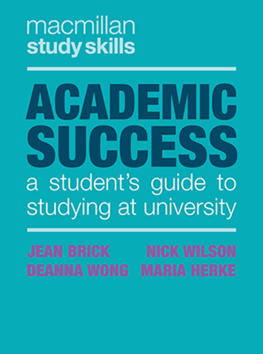
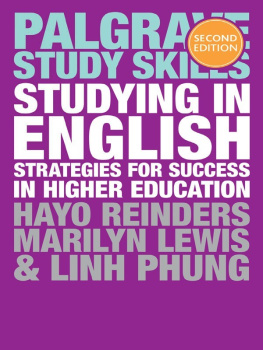
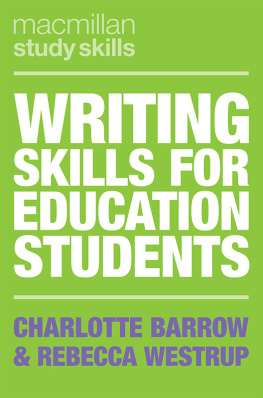
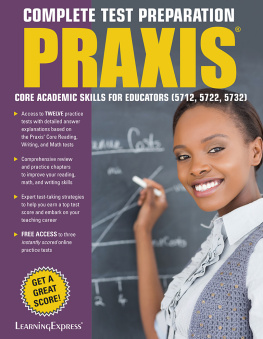

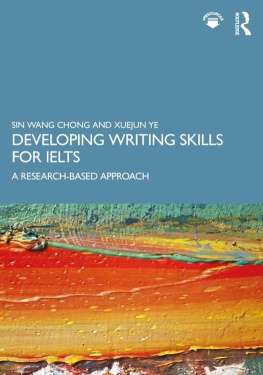
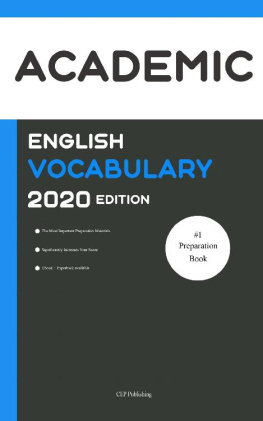
 FOCUS A: READING
FOCUS A: READING Before you read, think about and/or discuss your answer to these questions:
Before you read, think about and/or discuss your answer to these questions: